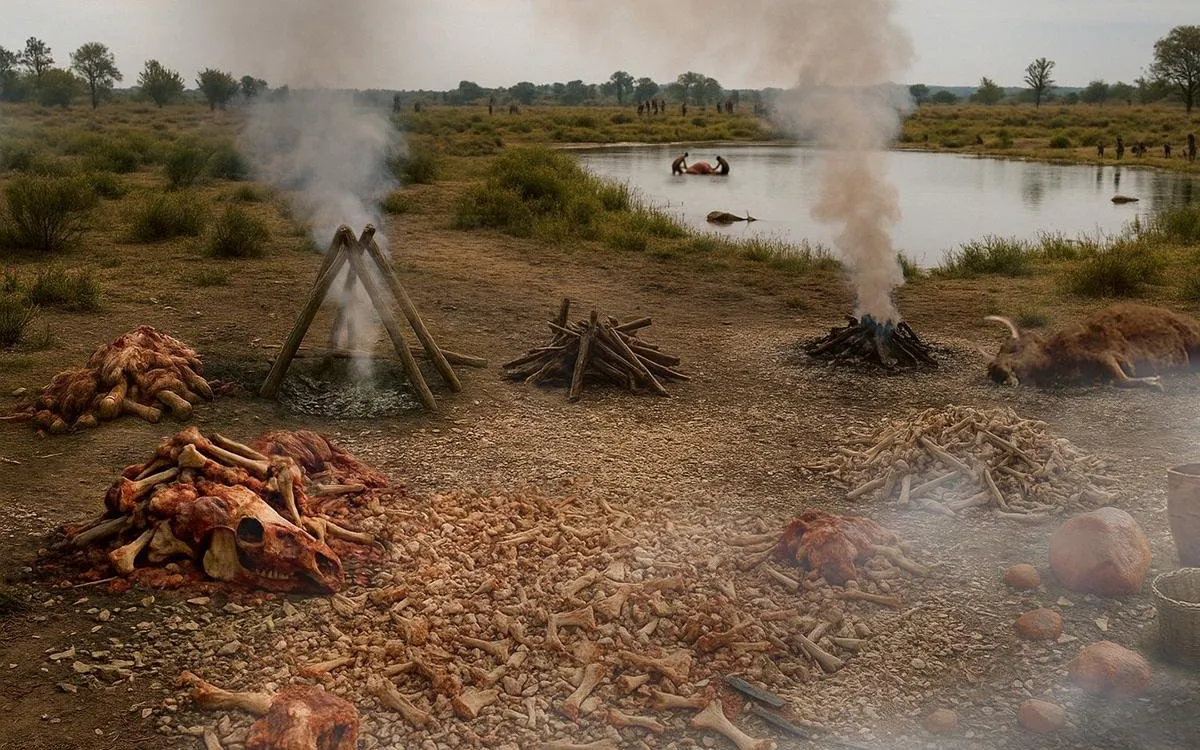
A recent study reveals that Neanderthals living in central Germany around 125,000 years ago employed an advanced method of food preparation. Researchers uncovered evidence of these early humans systematically stripping fat from the bones of large animals, utilizing a combination of water and heat. This groundbreaking practice was discovered at the Neumark-Nord 2 archaeological site, and it challenges previous notions about the nutritional practices and resource management capabilities of Neanderthals.
The study, published in the respected journal Science Advances, involved a collaborative effort by international researchers, including experts from the MONREPOS (Leibniz Centre for Archaeology), Leiden University in the Netherlands, and the State Office for Heritage Management and Archaeology of Saxony-Anhalt. Their findings indicate that Neanderthals not only engaged in smashing bones to access marrow, a behavior inherited from their earliest African ancestors, but they also crushed bones into fragments and boiled them to extract a nutrient-rich substance known as bone grease.
Dr. Lutz Kindler, the lead author of the study, emphasized the organized and strategic nature of these activities. “Neanderthals were clearly managing resources with caution—planning hunts, transporting carcasses, and rendering fat in a task-specific area. They understood both the nutritional value of fat and how to access it efficiently,” he stated.
At the Neumark-Nord site, researchers documented the butchering of at least 172 large mammals, including deer, horses, and aurochs. The production of bone grease, which necessitates substantial quantities of bone, was previously thought to be an innovation limited to Upper Paleolithic modern humans. This discovery extends the timeline by thousands of years and indicates a fundamental shift in our understanding of the Neanderthal diet and their ability to adapt to their environment.
The Neumark-Nord complex was initially identified in the 1980s by archaeologist Dietrich Mania. Excavations conducted between 2004 and 2009 revealed multiple zones showcasing various Neanderthal activities, such as deer hunting, light butchering, and specialized fat removal. Additionally, cut-marked remains of 76 rhinos and 40 elephants were uncovered at nearby sites like Taubach, highlighting the extensive range of Neanderthal behaviors in this landscape.
Prof. Wil Roebroeks from Leiden University noted, “What makes Neumark-Nord so exceptional is the preservation of an entire landscape, not just a single site. We are seeing a range of Neanderthal behaviors within the same landscape.” This comprehensive view of Neanderthal life illustrates their high level of sophistication and adaptability.
The activities of Neanderthals at Neumark-Nord not only demonstrate their advanced techniques but also suggest that their mass hunting of slow-reproducing species had significant long-term environmental impacts. Prof. Roebroeks cautioned that such practices likely left a substantial mark on the fauna of the region during the Last Interglacial period.
These findings present a compelling picture of Neanderthals as more capable and intelligent than the traditional stereotype of the brutish caveman. The so-called “fat factory” at Neumark-Nord highlights a species that could plan for the future, manage its environment, and maximize nutrition, even in resource-poor environments.